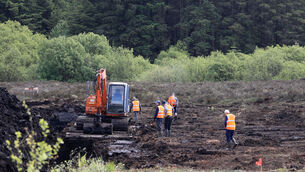CIT scientists discover potentially fatal species of bacteria in monkeys
Tests carried out by CIT boffins on a rare lion-tailed macaque in Cork led to the discovery of the bacteria species which has been officially named Campylobacter corcagiensis — in honour of its hometown.
CIT’s CREATE team of Dr Roy Sleator, Dr Bridig Lucey and PhD student Monika Koziel were responsible for identifying the bacteria, which may have caused the monkey gastrointestinal problems, including diarrhoea.













